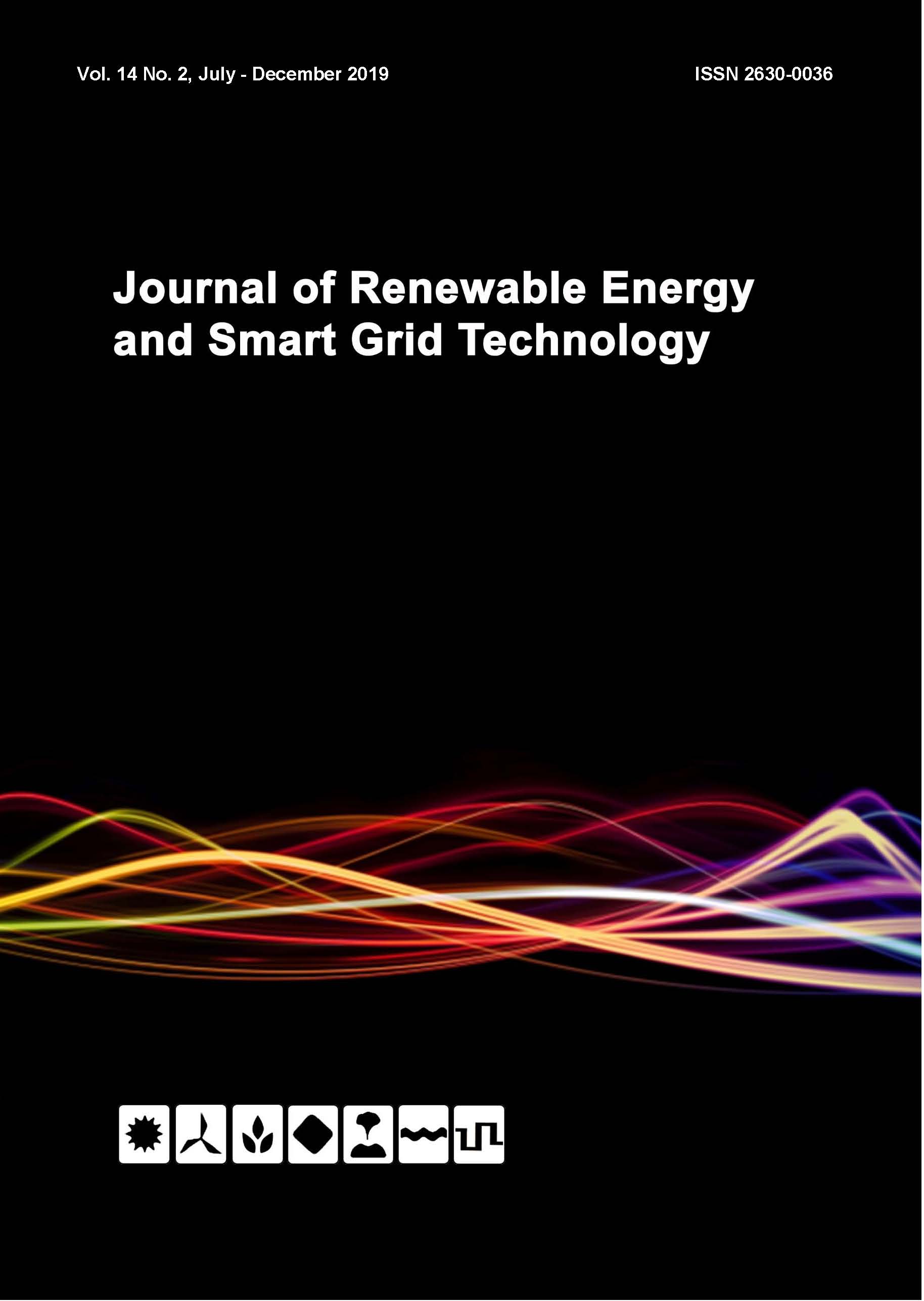The Analysis of the Location Potential Appropriate for Constructing the Decentralized Electricity Plant from Solar Energy
Keywords:
Decentralize power plant, Renewable energy, Analytic Hierarchy Process, Geographic Information SystemAbstract
Sufficient, flexible and reliable electricity supply that allows demand response plays a vital role in the economic development, as. Electrical power drop or outage may result in big economic losses. This is always a major concern with large fossil fuel based power plants. The world is also facing now environmental problems, such as climate change, caused by the use of fossil fuel-based power plants. On the other hand, decentralized renewable energy-based power plants, like solar PV power plants are now proving to be alternatives to fossil-fuel based power plants. Decentralized renewable energy power plants are now being installed in many places in Thailand, and they are showing that these systems can be reliable, flexible and secured energy supply. More of these systems can be installed in the country. This study aimed to propose a method for identifying and analysing potential locations of decentralized solar PV electricity plants. The method include the use of both the Geographic Information System (or GIS) and the Analytic Hierarchy Process (AHP). A case study was conducted for Chiang Rai province. Using the two processes led to the creation of a map and concluding the information applied in a decision making of finding the appropriate and potential that shows location in Chiang Rai province where are the suitable locations. Locations were classified in terms of elevation levels and by districts of the province. The method is not difficult to apply and can readily be used by investment decision makers in both the government and private sectors.
References
[2] Suraphan Wongopasi. (2018). Centralized and Decentralized Electricity, which is better?
Retrieved from https://www.ryt9.com/s/prg/2929360
[3] Chiang Rai Provincial Administrative Integration Committee (2016). Chiang Rai Provincial
Development Plan 2018 – 2521. Chiang Rai Provincial Office, Chiang Rai City Hall.
[4] Chiang Rai Office of Industry. (2017). Annual Report Analysis for Economic and Industry 2017
(January – June 2017). Retrieved from https://www.industry.go.th/chiangrai/index.php/download/22522-2560-60?path=
[5] Department of mineral resources. (2006). Chiang rai geology and mineral resources zoning
and guiding for management. Department of mineral resources, Ministry of natural resources
and environment.Bangkok.
[6] WorldClim-Global Climate Data. (2018). World global radiation. Retrieved from
https://worldclim.org/version2.
[7] Department of Land Development (2559). Land utilization Da. Retrieved from
https://www1.ldd.go.th/WEB_OLP/Lu_59/Lu59_N/CRI59.htm.
[8] Napont Surawakarat and Tullawit Sathapanajaru. (2013). Searching Suitable area for Biomass
Power Plant from Rubber wood in Rayong Province. Research Journal Graduate School Khon
Kaen University. 13(2).
Downloads
Published
How to Cite
Issue
Section
License
All copyrights of the above manuscript, including rights to publish in any media, are transferred to the SGtech.
The authors retain the following rights;
1. All proprietary rights other than copyright.
2. Re-use of all or part of the above manuscript in their work.
3. Reproduction of the above manuscript for author’s personal use or for company/institution use provided that
(a) prior permission of SGtech is obtained,
(b) the source and SGtech copyright notice are indicated, and
(c) the copies are not offered for sale.









